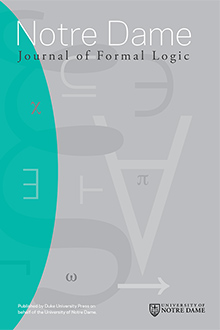Abstract
This paper investigates modular combinations of temporal logic systems. Four combination methods are described and studied with respect to the transfer of logical properties from the component one-dimensional temporal logics to the resulting combined two-dimensional temporal logic. Three basic logical properties are analyzed, namely soundness, completeness, and decidability. Each combination method comprises three submethods that combine the languages, the inference systems, and the semantics of two one-dimensional temporal logic systems, generating families of two-dimensional temporal languages with varying expressivity and varying degrees of transfer of logical properties. The temporalization method and the independent combination method are shown to transfer all three basic logical properties. The method of full join of logic systems generates a considerably more expressive language but fails to transfer completeness and decidability in several cases. So a weaker method of restricted join is proposed and shown to transfer all three basic logical properties.
Citation
Marcelo Finger. Dov Gabbay. "Combining Temporal Logic Systems." Notre Dame J. Formal Logic 37 (2) 204 - 232, Spring 1996. https://doi.org/10.1305/ndjfl/1040046087
Information





